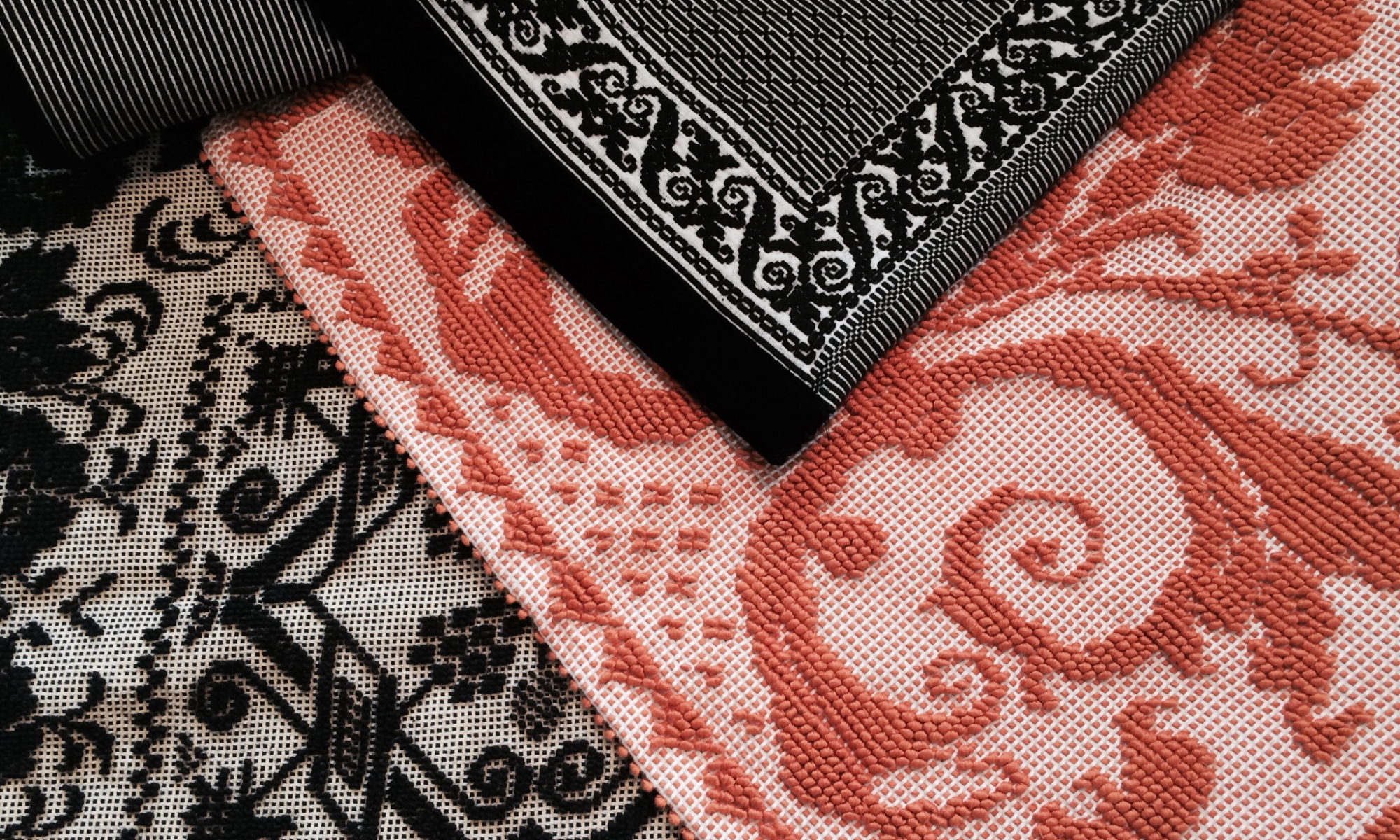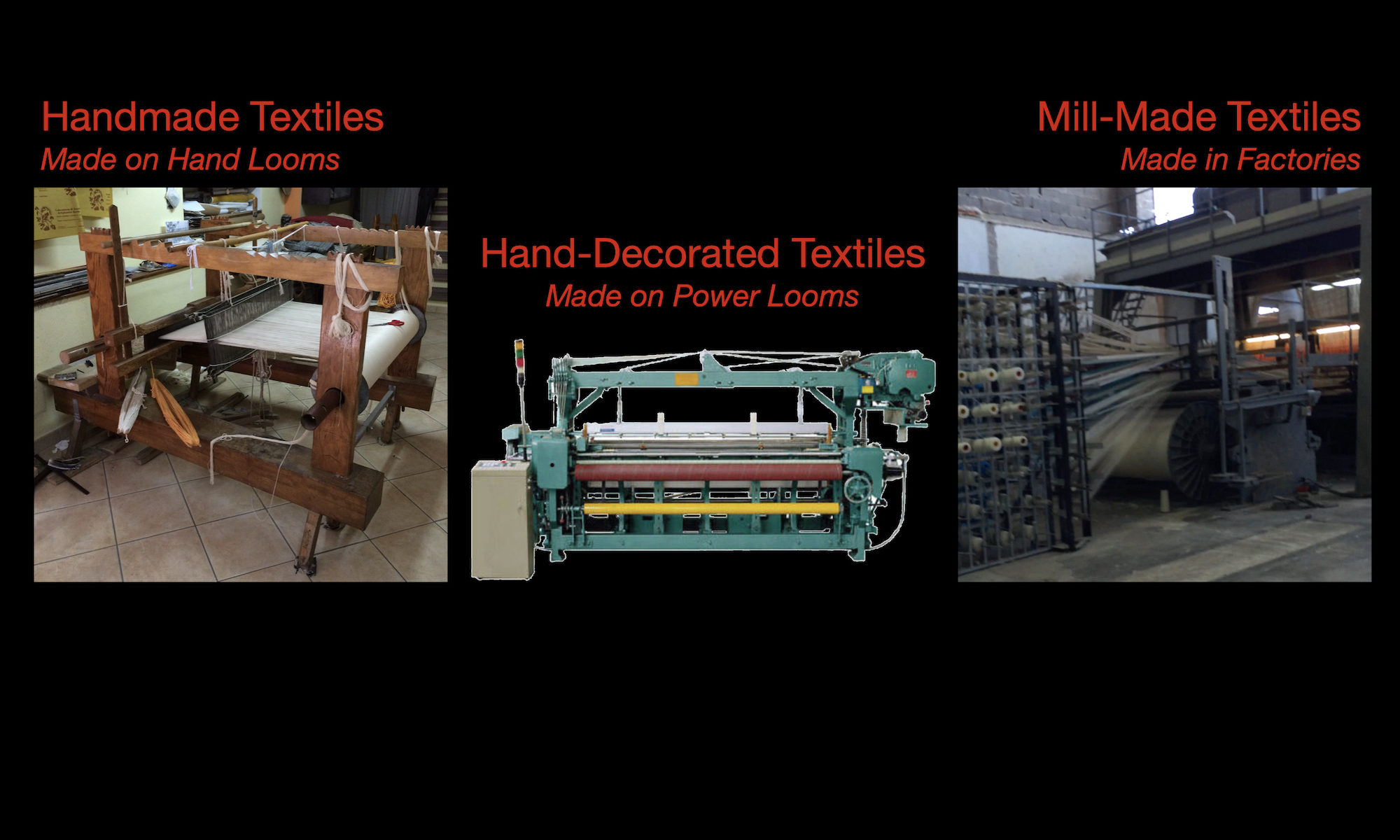All too often across the world, items are classified as “handmade” when they really are not.
When the term “handmade” is used to market items that are not made by hand by an artist, many problems arise, and the buyer, the artist, and even the commercial makers of related products suffer. The buyer often pays too much; the artist earns too little; and the commercial makers have difficulty maintaining quality and production in their home area.
This has been evident in food as well as textiles across the world. For instance, when you think of cheese you might sprinkle lightly over pasta, do you think of a green can of “Parmesan” cheese sprinkles, a bag of shredded “Parmesan” cheese, or a heavy round of solid cheese inscribed Parmigiano Reggiano DOP?
The European Union recognizes different classifications of traditional food to make certain we don’t equate the green can of mass-produced “Parmesan” cheese with the round of traditional Parmigiano Reggiano DOP produced in the traditional manner in the cheese-making facilities of the Parma region, or (rarely now) in the farmhouse kitchens of Parma.
Ensuring the foods are classified and clearly labeled ensures buyers know what they are purchasing, where it was made, how it was made, and what ingredients the food contains. These factors drive, and help the buyer understand, the fair price range for the food. Obviously, Parmigiano Reggiano DOP is going to cost more than the green can of cheese, and a round made by nonna in her Parma kitchen will be rarer still, and more costly if she were to sell in the local market rather than gift it to you.
Similarly, to protect purchasers as well as the weavers and economy of Sardinia, it’s important that Sardinian textiles are classified accurately with reference to the method and place in which they are made.
There are three textiles classifications I use and maintain with Sardinian Arts. Any item I discuss is accurately classified with integrity according to this system. I personally visit weaving studios, power loom shops, and mills to meet owners and verify how textiles are made. I also advocate with weavers and others in Sardinia to adhere to this classification system to ensure the integrity of textiles “Made in Sardegna” and ensure the weavers, producers, and artists of Sardinia are treated with respect and that their items are sold in a fair and sustainable manner.
Handmade, Hand-decorated, and Mill-made Classifications
The classifications are handmade, hand-decorated, and mill-made:
- Handmade textiles: Textiles made completely by hand, using looms where all the movements and beating — the compression of each row of woven fibers —
are done only by hand or foot, and not by a hydraulic, electronic, or computerized loom.
- Hand-decorated textiles: Textiles made by hydraulic, electronic, or computerized looms, where all the beating is not done by hand/foot. The weavers stops the mechanical beating of the loom to make pibiones and/or add other decoration by hand.
- Mill-made textiles: Textiles made in mills, by hydraulic, electronic, and/or computerized looms, with minimum human involvement. Many similar textiles are produced at the same time on huge looms.
All the classifications permit:
- The use of fibers prepared in mills, and
- The use of a sewing machine, if the use is to make seams/hems after the weaving is cut from the loom and the seams/hems are not decorative.
Fibers prepared by hand without the use hydraulic, electronic, or computerized tools can be distinguished with the label “hand-spun”.
Yes, there are some weavers who spin and/or dye their own fibers, yet the decline of handweaving over the decades decimated hand spinning, hand dying, and even the wool industry, all of which are on the rebound, yet can’t currently or practically deliver sheep-to-spun fibers that are entirely hand-curated, even for the relatively small number of handweavers. This is true in Sardinia and across the world, and being addressed by fiber sheds and others – topics for additional discussion!
As you know, my love is with the handwoven, and I work exclusively with the handweavers. I recognize that the power loom shops and mills of Sardinia produce well-made textiles, yet the price point and markets of commercially-made textiles are different. Mill-made textiles are the least expensive to make, and generally what tourists find in shops as well as hotels and restaurants across the island. Powerloom shops can create customized items quickly and in duplicate, which pleases interior designers who add their own markup to textiles they sell to clients. The true handweavers craft their own pieces and occasional custom orders for discerning collectors and those who appreciate and value the time, skill, care, and anima that goes into warping, weaving, beating, and curating the creation of a fine textile.
Questions?
If you have any questions about whether the textiles you are buying are handmade, hand-decorated, or mill-made, please contact me.
© 2013 – 2025 Kelly Manjula Koza | All Rights Reserved
If you would like to copy the textile classifications text to use on your own site or collateral, kindly include this credit and link: “Textile classifications as defined on SardinianArts.com.”







